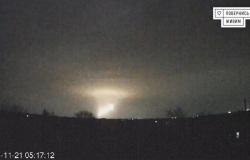In 2023, another biobot revealed astonishing abilities. The anthrobot could repair neurons! Beyond the prowess of biobots, these experiments reveal an important consideration: the “destiny” of a cell is not fixed! They do not necessarily follow a predetermined path, and are capable of adapting to new environmental conditions.
“What mechanisms allow certain cells to continue functioning after the death of an organism?”
In their new study, Peter Noble and Alexander Pozhitkov observed gene expression in cells from dead zebrafish and mice. Against all expectations, they noticed bursts of transcription of certain genes. Their results were published in the journal Physiology. This study is intrinsically linked to the length of time organs and tissues are preserved for transplants, since they continue to function even after the death of the organism. “This resilience raises the following question: what mechanisms allow certain cells to continue functioning after the death of an organism?” asks Peter Noble.
Why study genetic expression?
The information stored in DNA is divided into genes: portions of chromosomes. An enzyme, called RNA polymerase, reads and transcribes the information contained in these genes into a new code: mRNAs, also called “transcripts”. These will be used to manufacture molecules useful to the cell, such as proteins for example. Other types of RNA serve various functional roles. All of these biochemical processes are grouped under the term “genetic expression”. This is therefore an indicator of cellular activity, but not the only one.
Sciences et Avenir: How did you become interested in the border between life and death?
Peter Noble : When Alexander Pozhitkov suggested to me, over a beer, that we study death, I initially thought it was a joke. But he already saw beyond our current work. At the time, we were working on DNA, and the expression of genes, which is linked to their activity. Intuitively, we expect gene transcriptions to be active during life and cease at death, right? But against all expectations, we discovered that the expression of certain genes increases significantly after death – both in mice and in zebrafish, for example!
At first I was skeptical of this data. However, by applying a statistical technique, we identified distinct “waves” of increase in transcript abundance. It is interesting to note that the genes concerned are associated with various biological processes, including stress, immunity, inflammation, etc. The question that then arose was: why? So we haven’t really tried to study the boundary between life and death. Our curiosity was simply piqued by the question of why the transcription of certain genes increased just after the death of the organism.
Read alsoAnthrobot, a “biological robot” made from human cells
“Survival mechanisms play a key role in the lifespan of cells and tissues”
How can we explain the spontaneous restructuring of the cells taken into clusters?
The spontaneous restructuring of cells into clusters is an emerging property that was not well understood. What is particularly fascinating is that individual cells can form new multicellular organisms (such as xenobots) without adhering to predetermined developmental pathways.
For example, in frog embryos, the cells have cilia that they use to expel mucus. However, the xenobots reuse the cilia in another way: to navigate their environment. This finding suggests that cells have an inherent ability to adapt to new environmental conditions. Future studies could delve deeper into the plasticity of cellular systems. Previous work also suggests that physicochemical interactions, such as bioelectric networks, act as the “cognitive glue” that binds individual subunits into larger emergent entities.
What did you observe when studying the gene expression of cells from dead animals?
Already in 2017, we observed an increase in the transcription of certain genes, after the death of zebrafish and mice. Several hypotheses could explain these “waves”. Over the course of evolution, certain pathways may have developed to promote healing, or “resuscitation” after serious injury. Which would constitute an adaptive advantage. The increased abundance of inflammation response transcripts, for example, would indicate that a signal of infection or injury is detected by cells still alive after the death of the organism. Furthermore, these increases could also be due to the rapid degradation of certain gene repressors or entire pathways leading to gene transcription.
How can we explain the disparities in terms of lifespan between different cell types?
Our recent discoveries shed light on the factors that influence the survival and function of cells after the death of an organism. Indeed, their lifespan varies greatly from one type of cell to another. As an indication, white blood cells in humans die between 60 and 86 hours after death. But some mouse muscle cells can be cultured 14 days after death. We even reach one month for fibroblasts from sheep and goats.
Lifespan depends, among other things, on the metabolic activity of the cells. For example, neurons or cardiac muscle cells have high energy requirements. They are therefore more difficult to cultivate than fat cells, adipocytes, or fibroblasts which have little energy requirements.
Survival mechanisms also play a key role in the lifespan of cells and tissues. A significant increase in the activity of genes related to stress and genes related to the immune system is observed after the death of the organism, which is likely to compensate for the loss of homeostasis, the physiological balance of cells. Other factors such as trauma, infections, age or gender also significantly affect cell viability. This is one of the reasons why transplants represent a real medical challenge.
So what are the interactions between these variables and how do they allow cells to function after death? One of the hypotheses that could be put forward is the following: certain channels present in cell membranes generate electrical signals, allowing cells to communicate with each other and carry out functions. They could thus shape the structure of the organism they form.
Read alsoDeath: the last moments, second by second
“Life and death are traditionally considered opposites, but they are not”
Why can we truly speak of a “third state” between life and death?
We came up with the concept of the “third estate” because life and death are traditionally seen as opposites, but they are not. Alexander and I have previously discussed the “twilight of death,” which we defined as the transition from a living body to a decaying corpse. At the time, we were not aware of the possibility of a third state, which we later reported.
The third state does not correspond to developmental transformations, such as the metamorphosis of caterpillars into butterflies or the evolution of tadpoles into frogs, because these are developmental processes. The third state is distinguished from these transformations because cells have the capacity to develop into multicellular organisms with new functions. Imagine taking a single cell from a living human being and, through sophisticated engineering techniques, allowing it to grow into a new multicellular organism. This new organism would no longer be considered a human being, but is it? It is made of the same genetic material as a human being. Should we grant this new multicellular organism the same rights as a living human being? Another interesting question is: what are the new properties or behaviors of this new organism, and what are the underlying mechanisms?
What practical implications can these results have for medicine?
The practical implications are potentially numerous, but none have been realized so far. The Levin laboratory, from which the anthrobots originate, suggests that biobots could be injected into the body to dissolve plaque in patients with atherosclerosis or to eliminate excess mucus in patients who suffer from cystic fibrosis. Robots grown from individual living tissues could also be used to deliver drugs without triggering an unwanted immune response since they are grown from the patient’s own cells. As for our latest work, it sheds light on the underlying mechanisms of organ and tissue donation, as well as transplantation. A better understanding of how certain cells continue to function, and even metamorphose into new multicellular entities some time after an organism dies, holds promise for the advancement of personalized and preventive medicine.






